“Gringo!“
Having heard the term said to me many times before I hesitate a few steps before turning around. A short scruffy Hispanic man with a big friendly smile stands with two friends on the sidewalk in front of the church looking at me. I walk up to them and we start talking.
José is an immigrant from Honduras. His young friend Jose Guillermo is from Guatemala. The other friend lives here in Chiapas. The two Joses came illegally into Mexico with the intention of working in Cancun doing commercial painting. Jose is no stranger to getting around illegally in foreign countries. A few years ago he was living and working in Los Angeles, California mostly doing gardening work. His visits to Malibu, Long Beach and San Francisco were his most memorable.
Before leaving I ask Jose if he can recommend to me a place to eat some tacos. He recommends a tiny taco shop half a block away. After savoring five tacos de barbacoa (MN$35 or about US$2.50) I find Jose and his friends still in front of the church. They are waiting for mass to end so they can ask the people for pesos to pay their bus ride to Cancun. With a tilt of the head he, almost coyishly, asks me for money. I give him a small donation. He then asks me where I’m staying. I tell him I don’t know, I just got here. He recommends to me a cheap hotel called Los Faroles a few blocks down the street. Rooms are only MN$140 per night (about US$10). He and the other Jose are staying there.
- José Guillermo, “El Gringo”, and José in Pichucalco
- Catholic church in Pichucalco
The dark, narrow, concrete street goes up a hill a couple of blocks then turns to the left. Los Faroles is there on the left. If Jose hadn’t told me of this place I never would have found such an inexpensive hotel. At the reception desk in the tiny bright-colored lobby a large man checks me in to room 24. He assumes I am going to El Chichón because there is no other reason that a gringo would come to Pichucalco.
History of El Chichón
Pichucalco is a small non-descript city of over 14,000 inhabitants in a mountainous area of the northern region of the state of Chiapas in southern Mexico. El Chichón is the name given to a volcano that lies nearby. The thing is El Chichón is still active. In 1982, near midnight on March 28, a cataclysmic event occurred that stil remains vivid in the memories of the people. The lava dome of the then considered dormant or extinct volcano erupted with such force that it sent columns of gas and ash high into the stratosphere that covered an area about 100 kilometers wide raining ash on the communities and land below. The devasting explosion and pyroclastic flows completely obliterated nearby villages killing over 2,000 people. Others were forced to leave as the ash and earth dispelled from the volcano destroyed homes, contaminated water sources and destroyed crops and livestock. But things even got worse.
In the days following the March 28 eruption more explosions occurred. On April 4 an even more powerful explosion sent a greater amount of gas and ash into the stratosphere. Ash covered the surrounding area over a foot deep and completely changed the landscape. The explosions created a new 1 kilometer wide crater 130 meters deep with an acidic lake in the bottom. The large amount of sulfur dioxide aerosols released into the atmosphere from El Chichón had a measurable cooling effect in the northern hemisphere in the years following. Over the decades since the eruption life slowly returned to the land surrounding El Chichòn but inside the crater hydrothermic activity continues. Gases and plumes of vapors rise from pressure vents in the rocky floor of the crater. Sulfuric gases bubble up from below the surface of the water tinting the water a jewel-like emerald green creating the effect of a primordial soup from the days of creation long ago. I want to experience El Chichón for myself and that is why I am here.
The adventure begins
The rooms at Los Faroles are the most basic I’ve ever seen and offer really not much more than what a jail cell in the U.S. might have for amenities. The rusty metal door opens up to a 9-feet by 9-feet room with worn tile flooring and orange painted walls. There are no windows just ventilation vents high up on two walls. A twin size bed is on one side and a cement barrier about 5 feet high divides an area for the bathroom and shower. The toilet has no seat. An old tiny 14-inch television is secured on brackets high up on the wall. A three-blade ceiling fan hangs from the ceiling in the middle of the room next to a single fluorescent energy-saving light bulb that dangles from a hole in the ceiling.
- Interior of room 24 at hotel Los Faroles
- Interior of room 24 at hotel Los Faroles
There are nicer options for accomodations in Pichucalco but I am looking for the least expensive. Besides, the room is just to sleep for the night. I’ll be leaving early in the morning before dawn. I set my alarm and go to bed at 10:30 PM.
At 4:30 AM my alarm sounds. Moments later the pleasant voice of a man singing is heard down the hall. After a cool shower I pack my military ruck with probably more gear than I will need, check out of the hotel and walk through the dark quiet streets to the bus station. There I find a combi (a type of collective minibus taxi) with the destination of Ixtacomitán written on the window.
The ride to Ixtacomitán lasts about half an hour winding through a picturesque lush green hilly landscape barely visible in the dim light of the early dawn. The two lane road leads to the small town of Ixtacomitán. The van parks at the combi stop and each of us passengers pay the 12-peso fare as we step out of the vehicle (about US$0.90).
Across the street is the taxi stop. For 23 pesos (about US$1.80) I share the ride with two other passengers also going to Chapultenango which is the nearest town to the El Chichón volcano. A blanket of light gray fog hovers over the land obscuring the view of the highest peaks of the rugged jungle landscape. The poorly maintained road snakes through the mountains. Landslides have left boulders and tan-colored dirt across portions of the road in places. After a distance of 22 kilometers we arrive to Chapultenango.
“¿A dónde vas?”, the taxi driver asks me where I’m going?
“Voy a subir El Chichón”, I tell him I’m going to climb El Chichón.
He gives me the choice to get a guide or go alone. No guide I tell him.
From the drop-off point I walk north out of the town on a dirt road bordered by lush tropical vegetation. The ambient sound of exotic birds fills the air as they communicate from the upper branches of the trees. After a little more than a kilometer a white pick-up truck pulls up from behind me and the driver offers me a ride. I gladly jump into back of the rancher’s truck and join his dog and an elderly man for a bumpy ride. We travel a few kilometers then the rancher arrives to his destination. He meets several fellow cattle ranchers at the gate of a pasture and tells me that the road continues for about half an hour and there I will find the trail to El Chichón.
- Leaving Chapultenango up a road than soon turns to dirt
- The rancher’s dog is as anxious as I am to arrive
Cattle grazing on green pastures and mountain peaks covered with dense tropical foliage dominate the scenery for the last few kilometers remaining of the dirt road. I consult with a few travelers I meet along the way to make sure I haven’t yet passed the trail head to El Chichón. An old lady tells me that I really need a guide to get to the volcano. I assure her that I will find El Chichón. I finally reach the tiny community of El Ejido el Volcán at the end of the road and a young girl directs me to the trail head. She points to the west and says that the trail goes between those two distant domes to the volcano. There is a sign reading “Ruta de Evacuación” with an arrow pointing in the direction of return to Chapultenango and the entrance through the barbwire fence is there. A clear and narrow path is visible from the gate towards the west.
- A creek winds through lush green pastures
- Cattle grazing on green pastures
The path crosses a small creek over a narrow makeshift bridge of old timber and boards that bends in the middle. I’m about to attempt to cross it but after further investigation I realize that I could very well be the one to cause it to break so I climb down to a sandy spot along the grass bank and decide to change clothes and have breakfast first.
As I change into shorts and all-terrain hiking sandals I observe a small white horse impatiently prancing around on the other side of the creek. From behind me a rancher and his two sons approach to chat with me. They are waiting for two cows to be brought in from out in the pastures. None of them have climbed the volcano nor do they have any desire to. The adventure to hike to the top of El Chichón seems to be more attractive to visitors outside of the area.
- Makeshift bridge crossing creek near breaking point
- Rancher and his two sons from Chapultenango
Shortly after 9:00 AM the sun begins to break through the clouds and I leave my new friends and cross the creek through the pasture. The trail to El Chichón is said to be a distance of 5 kilometers. The first kilometer is an easy walk through plots of green pastures sectioned off by barbwire fence. The trail leads through gates that are easy to open. The landscape then changes becoming more rugged and increasing in inclination. Tall grass mixed with beautiful flowering orquids and sparse trees cover the land which was once covered by thick jungle prior to the eruptions of 1982. Small boulders of dark red lava rock are scattered in areas.
- The trail leads up between the two domes
- Crucifix orquids blooming in fields
The warm rays of the mid-day sun slightly redden my skin as beads of sweat drip off my face. The weight of the contents of my backpack is felt in my shoulders as I continue to trek through this wild post-apocalypse terrain. I come to a stand of tall grasses that I at first mistaken for sugarcane. The grasses flank the edge of a canyon with vertical walls over 10 meters deep cut through the thick tuff (type of rock consisting of consolidated volcanic ash) by a stream below. A wooden sign in front of a cluster of tall grass warns of the dangerous steep trail descent. I follow the trail down through dense green tropical foliage to the stream channel below.
- Sign warning of dangerous descent into stream channel
- Stream winding through eroded channel of pyroclastic rock
The rocks in the water of the stream are covered with a rusty red color apparently probably caused by a high iron content in the water. I continue walking upstream a short distance and see the trail continue up an eroded section of the canyon. I look behind me. There is no sign of human civilization in sight. Rolling hills and steep jungle mountain peaks extend as far as I can see. The faint sound of the stream and the occasional song of a bird are the only sounds that break the otherwise silent ambience.
The trail continues on target towards the depression between the two domes. I continue to ration my water supplies to make sure I will have enough for the return trip tomorrow. In some areas the path becomes a deeply eroded channel with walls covered with ferns and tall tropical plants and tree ferns reaching for the sky. Occasional pine trees appear as the elevation rises. I am intrigued by a trail of leaf-cutter ants marching across the path. I am surprised I even saw the tiny creatures as I hurry along. I kneel down for a closer look and observe several of them each carrying a finely cut piece of green leaf on their backs. Nature is so amazing!
- Red stained stream bed cut through pyroclastic rock
- The trail leads to a narrow passage through dense tropical vegetation
The trail leads me between the two domes just like I was told. The two domes are actually lava domes of the El Chichón volcanic complex. The erupted crater I am hiking to was previously a dome similar to these before the eruption in 1982.
The volcanic rim is now clearly visible with deep vertical ruts running down from the top. The trail leads me through the grasses up the volcanic rim and delivers to my eyes the panoramic view of the emerald-green lake and steaming gases of the interior of the crater below. The magnificent sight is also accompanied by a sharp pungent odor of rotten eggs. This is the unmistakable stench of sulfur gases. The hissing sound of the fumaroles releasing the hot gases sounds like the precursor to a huge inevitable explosion.
- Trail continues forward to top of El Chichón
- Magnificent emeral-green waters and fumaroles on shoreline
The trail continues to the left along the rim of the volcano to another wooden sign that warns not to go any further. I pass the sign and follow the trail down into the crater. The walls inside the crater are very steep and rocky with minimal vegetation. The descent must be done carefully especially without the use of a rope. One slip or misstep could be deadly. I manage to climb down in about half an hour. Hot sulfur dioxide gases escape from fissures in two huge boulders at the bottom of the descent.
- Looking for a way down into the deep crater
- Sulfur dioxide escaping through fissure in rock
Small rocks cover the bottom of the crater. The west end appears inactive while the fumaroles are heavily concentrated on the east end. Another wooden sign on the shore of the lake warns not to swim. Bubbles of hot gases rise from below the surface of the shallow jewel-colored waters. I dip my foot into the water. It feels like a warm bath. As I hike across the rocky crater floor I come to a large thermal vent under a boulder. The area around the opening is covered with yellow crystal-like hot sulfur needles. The steam escaping the vent is extremely hot and capable of burning the skin.
- Do not swim sign next to lake
- Fumaroles releasing hot gases and vapors
- The sulfur gases form sulfur crystals, or sulfur needles, around opening
- Sulfur gases escaping from vent under boulder
Further down near the shoreline a loud hissing sound accompanies hot boiling water escaping from below. The thermal spring bubbles up forming a small stream of water the flows into the lake as hot steam rises above. I should build a small room over this spot and make a sauna.
- Water boiling forth from hot spring
- Steam rising from hot spring
The area of the most intense activity peaks my interest. Fissures in the rocks cover the east end of the crater’s shore emitting a continuous flow of vapors. The scene appears like a smoldering landscape where an intense brush fire recently passed through. Carefully I step over the apparent hot spots to stand surrounded by a cloud of hot vapors. The fluctuating air currents cause the vapors to envelope me as if the volcano has choosen to consume me as a human sacrifice. The heat of a fissure nearly burns my little toe that sits exposed above the sole of my sandal. It is an incredible feeling to stand here in this extreme natural wilderness where the phenomenon of creation can be observed and felt.
- Sulfur deposits on rocky surface
- Hiking over the hot fissures inside the crater
As the sun descends behind the western rim of El Chichón I submerge myself in the warm emerald-green water. The sound of gases escaping through the fissures below reminds me of the jets of an outdoor spa. My feet sink deep into the soft flour-like sediment below. Rising up from below the surface makes me feel like I’ve just been baptized.
- Emerald-green waters of El Chichón
- Taking a therapeutic dip in the warm mineral-rich lake of El Chichón
While I know that other people have descended into the crater and swam in the lake before me without suffering any harmful health effects, I am aware of the potential risks to breathing potentially toxic concentrations of gases released from volcanoes. Sulfur dioxide and carbon dioxide are two of the most common gases released. Sulfur dioxide can irritate the skin and mucous membranes of the eyes, nose, and throat and affect the upper respiratory tract and bronchi. The World Health Organization recommends for maximum exposure a concentration of no greater than 0.5 ppm over a 24-hour period.
Carbon dioxide can be fatal in very high concentrations. CO2 is heavier than air therefore tends to concentrate in low depressions, such as a crater. Difficulty breathing, headache, dizziness, and lack of coordination are symptoms of lower level concentrations while unconsciousness, convulsions, and even death can occur at high concentrations. If any of these symptoms are experienced, it is important to get out of the area at once.
In order to not risk possible health hazards I decide not to spend the night in the crater. It takes me about half an hour to climb out of the crater. Hazy mountain peaks silhouetted by an orange tinted sky in the western horizon set the scene for a night of peace and serenity. A light fog rolls over the hills while I sit on the rim of the volcano eating a light dinner of hard-boiled eggs and homemade fruity pozol bread. The only sound is that of the gases escaping the fumaroles below. This is pure peace and communion with nature. During moments like this I feel a special closeness to God the creator. It’s just He and I out here in the wilderness.
At an altitude of 1150 meters (3772 feet) under the protection of plastic trashbags used as a sleeping bag I spend the long night resting on the rim of El Chichón. Fireflies cruise through the low brush while the intermittent sound of bat wings is heard as they fly above me. The continuous sound of crickets chirping and the fumaroles of the volcano whisper in the background. A light rain falls for a few hours, the droplets tap the plastic covering me.
- Camping on the rim of the volcano
- Waking up and rising to a cool foggy dawn
I manage to sleep more than I expected and wake at 6:15 AM to a cool foggy morning. After a light breakfast I make a rapid descent down to the base of the volcano and walk back to the town of Chapultenango to meet the locals and relax in the tranquility of a slower pace of life.
El Chichón was a special experience for me to observe a unique phenomenon of nature. It is relatively unknown to foreigners and this made it especially attractive to me. The world is full of amazing places to visit. To visit these places tends to give people an appreciation for the world we live in. The forces of nature are impressive and the power and existence of God is manifested through nature. In such places I feel the presence of God and I am humbled.
Getting to El Chichón
Traveling from Villahermosa in the state of Tabasco to Pichucalco, Chiapas there is limited bus service with ADO (Autobuses De Oriente). They charge MN$120 (about US$9.00) and the trip takes about 2 hours. Instead, I walked a couple of blocks to the Central de Autobuses de Tabasco and found that buses to Pichucalco depart every half hour all day long. The 2-hour 15-minute trip costs just MN$73 (a little over US$5.00).
- ADO bus terminal in Villahermosa offers limited service to Pichucalco
- Central de Autobuses de Tabasco in Villahermosa offers frequent departures to Pichucalco
Pichucalco serves as a good basecamp for an excursion to El Chichón because all ammenities can be found there, i.e. hotel, food, water, etc. Los Faroles hotel offers extremely inexpensive rooms. I stayed in rooms 24 and 26. Room 24 was a bit nicer than 26. An upgrade in accommodations is Hotel La Posada located less than 30 meters down the street. The rooms are cleaner and slightly bigger although having no windows. The rate is MN$250 (about US$18). There are plenty of small restaurants, fresh food markets, and convenience stores to purchase snacks and bottled drinking water for the excursion.
- La Posada hotel in Pichucalco offers simple clean rooms
- Hotel Los Faroles in Pichucalco is a very economical option
From Pichucalco combis going to Ixtacomitán can be found in front of the bus terminal as early as 5:00 AM. The cost is just MN$12 (about US$0.90) and the ride takes about half an hour.
- Bus station in Pichucalco
- Combi stop behind bus station in Pichucalco
From the combi stop in Ixtacomitán there is a parada de taxis across the street. I paid MN$23 (about US$1.80) and the 22 km. ride to Chapultenango took about half an hour.
Chapultenango is a very small quiet town with limited services. There are a few convenience stores and restaurants around the main plaza but they don’t open very early. I asked the driver to drop me off on the road to El Chichón but a hiker prefering a guided trip can be taken to a guide and the guide will be in charge of the volcano excursion for a nominal fee.
From the edge of the town of Chapultenango the rugged dirt road is bordered by barbwire fencing and goes north for about 7 kilometers traversing through green cattle pastures and areas of lush vegetation. Near the end of the road is an “Evacuation Route” sign. Just before the sign there is a gate in the barbwire fence that can be opened and the trail to El Chichón begins at that point and continues about 5 kilometers to the volcano.
- Evacuation route sign next to beginning of trail to El Chichón
- Arriving at Ejido el Volcan, the trail begins on other side of gate on left
It takes about 2 and a half hours to walk from Chapultenango to the beginning of the trail and then about 3 hours on the trail to the top of El Chichón. If not camping on or near the volcano it is important to allow sufficient time to return before dark.
Essential gear
I tend to travel a bit heavy with camera gear but other than that I’m a minimalist. I prefer all-terrain sandals for footwear as they can be worn in both wet and dry environments and help keep the feet naturally cool, as opposed to socks and shoes that cause the feet to sweat and are no good when crossing streams or mud because of the added weight of wet muddy shoes as well as the potential fungal infections that can occur. Sandals can be washed and dried quickly and easily too.
I usually wear cargo shorts when adventuring in warm climates however pants are fine too. There are a lot of grasses and brush on the trail to El Chichón and pants would provide good protection to minor scratches and scrapes. If it has rained, however, jeans would be a bad choice because they soak up too much water and become heavy and uncomfortable, therefore, a water resistant material is recommended.
I wore a tank top to El Chichón and got a slight sunburn on my upper back. A long-sleeved explorer type shirt made of breathable cotton would be a better choice as well as a wide-brimmed hat to protect the face.
For camping gear I keep it real simple. I used two big plastic trash bags as a sleeping bag. I slept on a shallow bed of dry grass and was quite comfortable. I used a small flashlight to check the ground under my bed for ants. I don’t want to build my nest on top of an ant colony. A good knife, compass, and parchute cord are also on my list of essential items. Anything else is negotiable.
Fuel for the trip
The hike up to El Chichón is quite strenuous and physically demanding in certain areas. This means that fueling up on nutritious snacks and water is essential. I consumed 3 liters of water during a 24-hour period on my excursion to El Chichón. The weather was warm but not hot. I recommend drinking at least 4 liters of water for each 24 hour period of outdoor adventure, especially during the hot months. It’s a good idea to have a backup plan in case water stores run out or an emergency occurs. Iodine tablets can be used to make naturally found water safe to drink. I wouldn’t drink from the crater, however the water from the streams sprung from springs in the tuff are probably safe to drink. It should be boiled or treated if possible, to be on the safe side.
I emphasize eating a lot of protein and healthy fats during a rigorous hike. I brought a dozen hard-boiled eggs with me and about half a kilo of a product I make that I call fruity pozol bread. It consists of ground corn, cacao, fruit and honey mixed together and baked like a bread in the oven. It remains fresh for a few days and provides good nutrition without preservatives and other additives. I also chew on wild grasses extracting the juice then spitting out the tough fibers.
It’s a good idea to hike with a friend or small group. When hiking alone I always make sure that a few close people know exactly where I’m going.
Experiencing Chapultenango
I was enamored with Chapultenango. The people are very friendly and kind. A local indigenous man showed me a very inexpensive comedor (dining room for visitors shared in family home) where I enjoyed a delicious plate of eggs and sausage with black beans, fresh cheese, and tortillas with a glass of refreshing agua de jamaica (hibiscus flower tea) for only MN$35 (less than US$3.00).
On another occasion, as I sat on a bench next to the church, a woman walked up and gave me 3 tamales wrapped in banana leaves and 2 fresh bananas. I was awestruck and so thankful.
Some musicians that had just finished performing at a Christian concert under the sports dome gave me a ride back to Ixtacomitán.
There is the famous teacher of Chapultenango, everyone there knows him. Profe Rigo speaks fluent English. He told me to ask for him if I needed a place to stay.
Children, adolescents, and adults of all ages were particularly curious about this lone gringo wandering around in Chapultenango and equally respectful and kind. We talked and laughed and I felt right at home. I will definitely be back!
Useful links about El Chichón
Geophysical features of El Chichón volcano
This slideshow plays random photos from El Chichón, Pichucalco, and Chapultenango.
(Click “pause” to control manually)
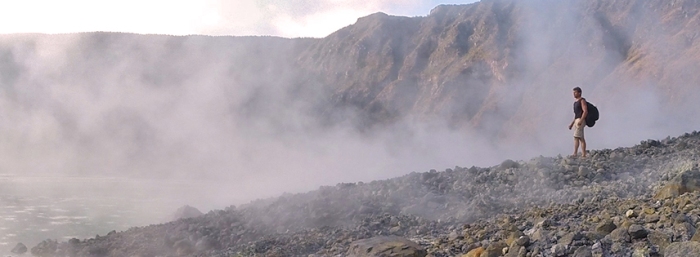



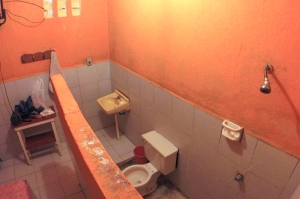



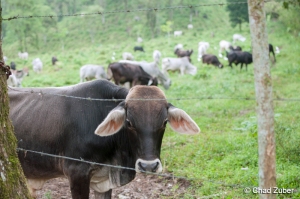


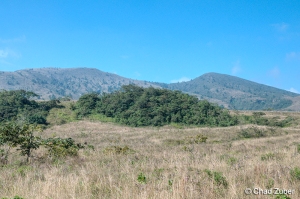



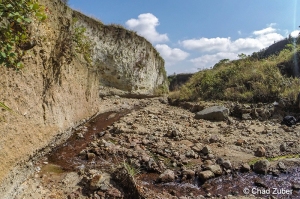



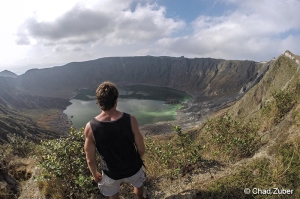
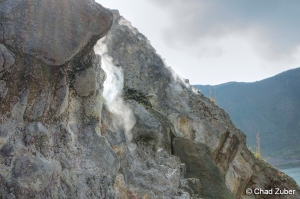

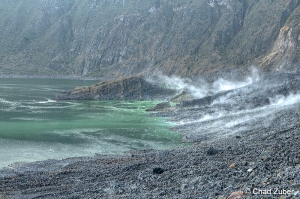
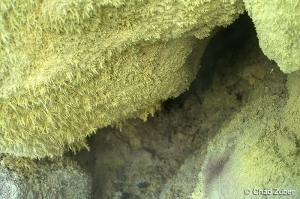





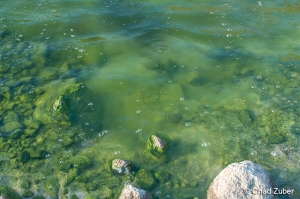
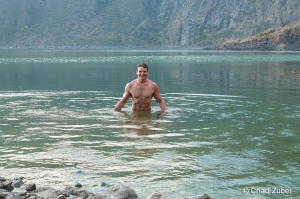
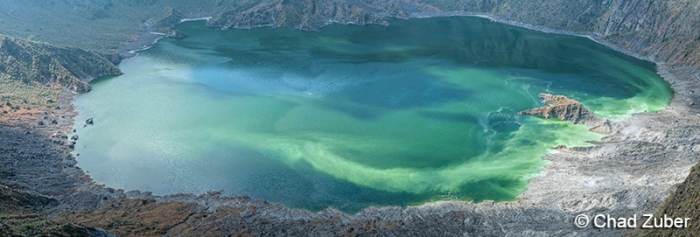





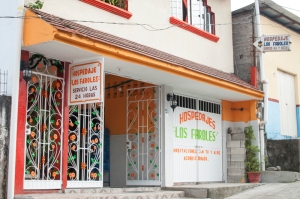
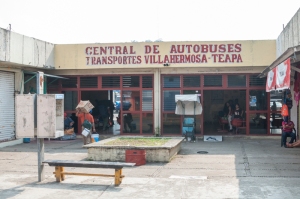


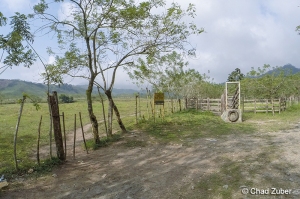


How did you feel in terms of safety? Did you ever encounter hostile people? Did you ever feel like you were in danger? I am a woman hoping to visit El Chichon next month with my husband. I am a native Mexican, he is not. Should we be worried about possibly being robbed?
LikeLike
I never felt any threat during my journey to El Chichonal. Recently, however, you could be delayed by teacher protests. I was traveling in south Mexico this month by bus and was delayed twice as teachers blockaded a highway between Villahermosa and Macuspana for three hours and another time for six hours when protesters blockaded the bus terminal in Tuxtla, Chiapas. Other than peaceful protests a local friend told me that locals have reportedly been charging an admission fee of about fifty pesos to enter the beginning of the going trail that leads to the volcano. While this is totally unregulated I would go ahead and have the fee ready to reluctantly pay to avoid hostility. Even if you don’t pay, be polite and friendly and everything should be just fine. Please let me know how your trip goes.
LikeLike